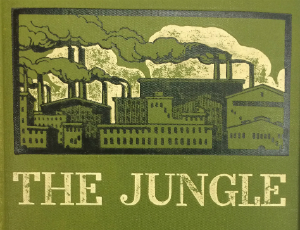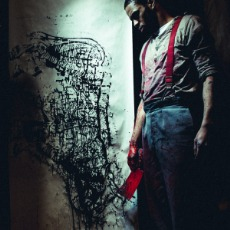Upton Sinclair published The Jungle 110 years ago. This famous expose of working conditions in Chicago's stockyards and packing houses led President Theodore Roosevelt and Congress to enact the Meat Inspection and Pure Food and Drug Acts of 1906.
The Jungle is available in other formats.
Sinclair's story is as much about working conditions as it is about the disheartening experience of Lithuanian immigrant Jurgis Rudkus and his family. The author is famously quoted, "I aimed at the public's heart, and by accident I hit it in the stomach."
Theaters have used the story, no doubt in an attempt to reach both their audiences' hearts and stomachs. However, The Jungle presents a unique staging dilemma. Tribune critic Chris Jones asks, "how the heck do you stage the scenes on the line, short of hiring a bunch of off-Loop cows to come in and represent their greatly mistreated ancestors?"
Not dissuaded, a New Jersey theater tackled the novel's first dramatization. According to a November 1906 newspaper report, "the audience was shown an exterior of a Chicago packingtown, with its mass of factories and yards, and cars from which live cattle were unloaded."
More than a hundred years later, in 2014, Oracle Productions mounted The Jungle in a new adaptation by director Matt Foss. This version gave Jones the answer to his question, "Instead of cows, you get great long spools of paper, upon which images of cattle are sprayed, evoking the branding of the animals themselves."
Oracle's inventive portrayal of the gruesome stockyards is now archived as part of the Chicago Film Archive of Performance (C-FAP), a collection of recordings of live theater preserved in Special Collections at Chicago Public Library. Join members of the cast and creative team and C-FAP's founder for A Snapshot of the Jungle on Thursday, May 26 at Harold Washington Library Center to celebrate this important new archive.




Add a comment to: The Jungle Comes to CPL